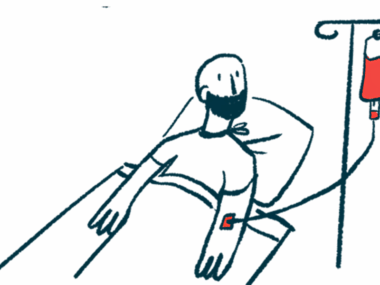The Waiting Room
Written by |

Life is filled with the impatient burden of waiting as we eagerly look toward important milestones, big events, and even the outcomes of the unexpected — both good and bad. And while we can be restless as we keep our eyes on the horizon, these measured moments of waiting are anticipated as naturally acceptable parts woven into the fabric of life.
But the burden of waiting morphs when living with chronic illness. Instead of sprinkling throughout moments in our lives, waiting becomes an all-consuming entity, forcing continual dependence on the actions and behaviors of others outside of our control.
Myasthenia gravis brings with it a riot of complex experiences and a new life so very foreign from our former healthy lives.
I have found that within this new life is a burden quietly born, rebuffed, and explained away in a facade of normalcy, the burgeoning emotions that it brings swept away into the expected acceptance that “this is just how life is” with chronic illness.
We wait for answers as new and strange symptoms begin to infiltrate our every day, begging for closer inspection; we shuffle through the confounding revolving door of second, third, and fourth opinions while months and sometimes years slip quietly by, seemingly unnoticed by medicine, a casualty of the outpatient and diagnostic journey.
We wait anxiously in emergency rooms, ambulances, and hospital beds, praying for the help we so desperately need.
We wait at home for the call to come that tells us the results we have been waiting to hear, harbingers of both tumult and hope.
We wait endlessly on the phone as we get shuffled back and forth to doctors, nurses, and agencies, all of whom assure us that the next person or group can help.
We wait for strangers to decide if we are sick enough, disabled enough, or in enough pain to determine if we qualify for financial, medical, or emotional help.
We learn many times to appreciate the difficult nuances found within our new lives, and part of the package is the call to wait, living in a perpetual waiting room; one that becomes familiar but nonetheless wearying in its unique way.
It’s almost as if we spend our time waiting not only to be believed and to find that care, but we also wait to live again, trying to learn and relearn all along the way as we wait; waiting to see what our bodies will do and what treatments we can afford and what side effects we will have. We wait to see if this next physician will be “the one” or if we will be left to wait yet again, a life put on hold so we can wearily start over and try one last time.
But in this waiting room of our new lives, we also learn the depth in which we can fight and endure and stand back up once again. We find our indomitable resilience and hope in these waiting rooms, and most importantly, we find others who wait with us.
***
Myasthenia Gravis News is strictly a news and information website about the disease. It does not provide medical advice, diagnosis or treatment. This content is not intended to be a substitute for professional medical advice, diagnosis, or treatment. Always seek the advice of your physician or other qualified health provider with any questions you may have regarding a medical condition. Never disregard professional medical advice or delay in seeking it because of something you have read on this website.






Leave a comment
Fill in the required fields to post. Your email address will not be published.